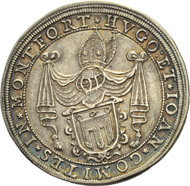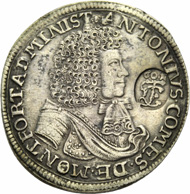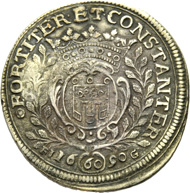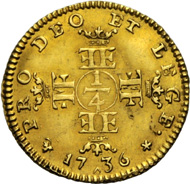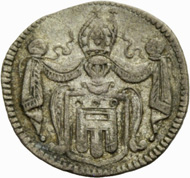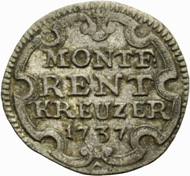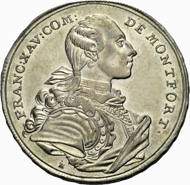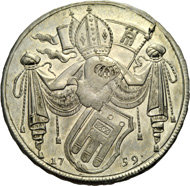by Joachim Stollhoff
If we heard today that a head of state had sold his state to another country and had retired into private life, on a pension provided by that country, we would think it odd. But that is exactly what happened in the South of Germany about 230 years ago: The reigning count of Montfort sold his county to the Austrians and retired on a pension.
In medieval times the counts of Montfort owned a large territory on the East shore of Lake Constance. Today their original possessions are divided between Germany, Austria, the Principality of Liechtenstein, and Switzerland. They were the founders of several towns, some of their family members were bishops of Chur in Switzerland and Constance in Germany, some were employed in diplomatic missions, and there was even a famous poet among them. The counts of Montfort were a powerful and important family.
But then the family split into several lines. The heritage was divided, there were many quarrels, they lost their influence, the debts accumulated, and their lands were sold piecemeal to the Hapsburgs.
The counts of Montfort hardly used their minting right in the middle ages, and they produced only a few very rare Bracteates. For the normal collector they become interesting in the 17th and 18th Century when they tried to make a profit from their coinage.
HUGO XIV and JOHANN VIII, 1619-1625. Taler 1620, Tettnang. Shield of arms with helmet. Rv. Crowned double eagle. Ebner 42. Münzen & Medaillen GmbH upcoming sale 37 on November 23, 2012, No. 331.
This started seriously during the financial crisis in Germany which was caused by the outbreak of the 30-Years-War. In 1620 they began to issue talers which had a slightly lower silver content than was normal. Then, in 1621, they leased their minting right to a group of investors who built a new mint in the town of Langenargen on Lake Constance. There they coined talers and 12-kreuzer-coins in the name of the Counts of Montfort.
In 1623 the German rulers decided that something had to be done about the financial crisis. And, sure enough, they managed to devalue the base coins and introduce new coins of good silver. To undertake such a measure in the middle of a war was extremely risky, but they succeeded. Count Hugo of Montfort took advantage of the situation and bought up old devalued and useless coins as scrap metal at a cheap price. Then he coined small 2-Kreuzer-coins from the silver which they contained. At that time the German states and dukedoms, principalities, counties, free towns etc. were organized in several circles. These circles met now and then to discuss their problems with the current coins.
So, in 1626 the Bavarian, Swabian and Franconian regional circles, i.e. all the councils in southern Germany, sent their delegates to a meeting in Augsburg. Coins were tested, and the silver content of the Montfort coins was found to be insufficient. The count was told to halt the production of his coinage and to send two responsible mint officials and their accounting books to the next meeting.
At this meeting, which took place in Nuremberg in October 1626, it was found that the Montfort mint was run by a coiner who had not been sworn in, and that only an “extract” from the accounting books had been sent. This situation continued for several years: the count was ordered to halt all coin production and to hand over his officials and the bookkeeping, whereby the count sent a letter to excuse himself instead.
In 1629 the count stopped minting his coinage; he had probably used up all his silver. In October 1630 he sent his accounts to the meeting of the regional circles in Regensburg. It was found that, in spite of all prohibitions, between 1626 and 1629 he had struck more than nine million 2-Kreuzer coins.
From 1675 Montfort coined 2/3 Thalers, Gulden to the value of 60 Kreutzer, and half- and quarter-Guldens. In December 1679 the three regional circles of Southern Germany attempted to ban the Montfort denominations from Gulden to Kreutzer.
This decision appears to have had little impact on the counts of Montfort- under Johann VIII., Anton the Elder, Anton the Younger, Ernst and Franz Xaver they continued to mint with much enthusiasm but little quality control, a situation which continued with only a few interruptions until 1763.
Money from Montfort was regularly denounced by the regional circles as inadequate, and was criticised and forbidden. For a time the market in Frankfurt am Main also refused to accept it.
ANTON, 1686-1693, as guardian for his nephew ANTON THE YOUNGER. Gulden 1690. Head and shoulders portrait with robe. Rv. Crowned shield of arms between branches; beneath FJ 16 (60) 90 G, with countermark of the Franconian Circle. Ebner 127. Münzen & Medaillen GmbH upcoming sale 37 on November 23, 2012, No 362.
There are nevertheless many Gulden which bear countermarks from the Franconian Circle. Such countermarks were struck on the good coins, which were deemed acceptable for circulation. This apparently contradictory situation can be explained through the continual process of devaluation: although the counts of Montfort struck coins which were below the standard fineness and weight, the standard itself decreased so much in the space of a few years that the older ‘substandard’ coins were no longer so conspicuous – they were now deemed ‘acceptable’ and countermarked. The counts of Montfort were by no means the only ones who minted substandard money. Löwenstein, Öttingen, Sayn, as well as ecclesiastical figures such as the Bishop of Constance and towns such as Kempten were accused of the same practice, and even the Emperor himself played a role in the process of monetary decline. This devaluation of the currency was everywhere to be found, but the counts of Montfort were always at the fore.
In 1722 a scandal broke out over the counterfeiting of Ratsschilling from Constance in the mint at Langenargen, but Count Anton denied all responsibility, as he had not struck the false coins himself, but had merely hired the mint out to someone else.
ERNST, 1730-1758. Quarter Karolin 1736. 3/4 length portrait r. Rv. Cross formed from two crowned double-Es and two crowned double-Fs, in the centre mark of denomination 1/4. Ebner 293. Münzen & Medaillen GmbH upcoming sale 37 on November 23, 2012, No 469.
In 1734 the mint at Langenargen began striking Karoline in gold. In 1736 a document concerning patents for coins in the Franconian Circle issued a warning, and in 1737 the Karoline were banned from Franconia. In 1749 all Montfort gold coins were banned from Hanover. This demonstrates that the counts of Montfort were always willing to mint coins when there was a chance of making a profit, regardless whether the coinage was in gold, silver or copper.
The counts of Montfort lived in a manner typical of nobly-born aesthetes in the Baroque Era. The new castle in Tettnang was built between 1712 and 1730 and furnished as befitted a representative residence. The construction of the castle and the upkeep of a representative estate cost money, however.
ERNST, 1730-1758. Rentkreuzer 1737. MONTF: / RENT / KREUZER / 1737 in cartouche. Rv. Shield of arms with helmet. Ebner 299. Münzen & Medaillen GmbH upcoming sale 37 on November 23, 2012, 472.
One can earn money with a bit of lateral thinking: the counts had Rentkreuzer minted, coins which were not produced for export, as was usually the case, but were intended for circulation within the Montforts’ own lands, and made no secret of the fact that their nominal value did not correspond to the value of the silver that was in them. The word “Renten” referred at that time to any regular payments, including taxes. The authority which collected the taxes was the “Rentamt”. The inferior silver Rentkreutzer were issued with the instruction that they were to be used to pay the next set of taxes due; they would then be accepted not at the value of the inferior silver contained in them, but at their full nominal value. This is essentially the same idea as that of paper money; the coin acted as a metal equivalent of a “Promise to pay”, and the tax would then be considered to have been paid.
In 1760 the Emperor issued a decree that whoever paid out or received Montfort coins should not only lose his money and thus suffer financial loss, but that he should also pay an additional fine. Despite this it appears that the Montfort coins of later years must have circulated intensively, as they are nearly all in terrible condition.
FRANZ XAVER, 1758-1780. Thaler 1759. 3/4 length portrait in armour r., with the signature of the diecutter J. Haag below. Rv. Shield of arms with helmet, below 17-59:. Ebner 352. Münzen & Medaillen GmbH upcoming sale 37 on November 23, 2012, No. 503.
Count Franz Xaver closed down the mint at Langenargen in 1763 and did not mint any more coins. He did however preserve the premises and all the equipment belonging to them, in the hope that he would be able to start minting coins once again. This hope was never fulfilled. In 1779-1780 Franz Xaver turned over his lands, along with all his debts, to the Habsburgs, became a pensioner and died shortly afterwards. In 1787 the last count, Anton IV, died as a private man in Tettnang, and the family line was extinguished.
In 1816 the King of Württemberg named his son-in-law, Jérôme Bonaparte, brother of Napoleon I, Prince of Montfort. There was no family connection between this new prince of Montfort and the old counts. There was even less of a connection between the counts of Montfort and the old noble French family line De Montfort, although the counts regarded St. Johann de Montfort from the old French line as their patron saint and depicted him several times on their coins.
Literature:
- Hirsch, J. Chr., Des Teutschen Reichs Münz-Archiv, Nuremberg 1756-1768.
- Klein, U., Die Münzen und Medaillen der Grafen von Montfort, in: die Montforter. Ausstellungskatalog des Vorarlberger Landesmuseums, Bregenz 1982.
- Klein, U., Die Münzstätte Langenargen, in: Langenargener Geschichte(n), Vol. 4, 1989.
To get just an impression of the Baroque splendour which surrounded the Counts of Montfort look at Tettnang Palace.
On November 23 2012 a comprehensive collection of Montfort coins is going to be auctioned at Münzen & Medaillen GmbH Deutschland.
You can see all these coins either at Sixbid or at Numisbids.





